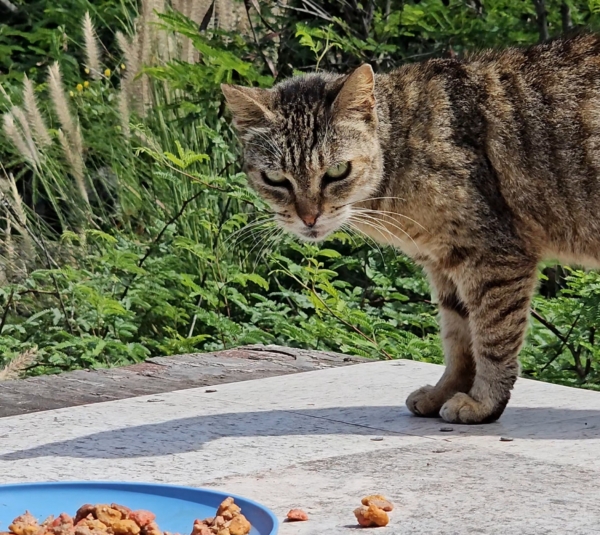Why are Feral Cats a Problem in Hawaii?

Feral cats are everywhere in Hawai‘i—from hotel parking lots to beach parks. Some people consider them harmless companions, while others view them as serious threats to native wildlife and public health. In reality, both perspectives matter. These cats are sentient beings deserving compassion, yet their unchecked numbers put Hawai‘i’s delicate ecosystems—particularly endangered birds and marine mammals—at risk. This article explores why feral cats are a concern in Hawai‘i, how state agencies and communities are responding, and what residents can do to promote humane, science-driven solutions.
How Did Feral Cats Become So Common in Hawai‘i?
Cats were first introduced to Hawai‘i by Western settlers and quickly adapted to island life. With no natural predators and a warm climate, they thrived. Over decades, abandoned pets, free-roaming intact cats, and continued feeding by residents and tourists accelerated population growth. According to the Department of Land and Natural Resources, tens of thousands of feral cats now inhabit the islands—many living in unmanaged colonies.¹ Their reproductive capacity, combined with limited sterilization, means populations can double within months.² This unchecked growth has made feral cats a visible and widespread issue.
What Makes Feral Cats a Problem in Hawai‘i?
Native Wildlife Impact
Hawai‘i is home to unique, ground-nesting birds like the Hawaiian Petrel and Newell’s Shearwater, which never evolved defenses against mammalian predators.³ Free-roaming cats prey heavily on these vulnerable species, contributing to declining bird populations.³ In global reviews of island ecosystems, domestic cats consistently rank among the top threats to native wildlife.⁴
Disease Transmission
Feral cats are carriers of Toxoplasma gondii, a parasite whose oocysts can enter waterways and infect marine mammals—such as monk seals—and pose risks to public health.³ Additionally, cat feces and parasite eggs can affect soil and water quality.⁵ Colonies without medical care also serve as reservoirs for fleas, toxoplasmosis, and other diseases affecting both wildlife and community health.
Community Concerns
Large, unmanaged cat colonies often lead to odor, noise, and sanitation complaints. Limited access to veterinary care for sick or injured cats can cause prolonged suffering and community distress. Together, these issues raise public concern and limit coexistence without intervention.
What Is Hawai‘i Doing About Feral Cats?
Trap‑Neuter‑Return‑Manage (TNRM) Programs
Organizations like the Hawaiian Humane Society partner with the City & County of Honolulu to offer no-cost spay/neuter, ear notching, microchipping, and vaccinations—through programs like Feline Fix.⁶ This approach stabilizes colonies without euthanasia and supports long-term, non-lethal population control.
Government Policies
The DLNR labels feral cats as invasive species and discourages feeding near sensitive habitats.⁷ Public information campaigns stress that feeding can inadvertently harm native species. In April 2023, DLNR closed a large feeding station at a major shopping area, highlighting concern for endangered birds and toxoplasmosis risk.³ Plans for cat sanctuaries on state land have also been proposed as safe havens away from sensitive ecosystems.⁸
Public Engagement
Animal welfare organizations—including Aloha Animal Alliance, Maui Humane Society, and CatFriends—educate communities through workshops and volunteer-supported colony care. These efforts aim to merge ecological concerns and humane treatment through informed public participation.
Why Is Relocating or Removing Cats Not a Simple Solution?
Removing cats from colonies often triggers a “vacuum effect”—new cats move into cleared areas, undoing progress.⁹ Displacement causes significant stress, and relocated cats have lower survival rates. Euthanasia is deeply controversial and often impractical due to lack of shelter space and ethical concerns.⁴ Studies have repeatedly shown that removal without sterilization or rehoming fails to reduce feral populations sustainably.⁴ TNRM, when performed systematically with high participation rates, can gradually shrink colonies while maintaining social structure.
Can Feral Cats and Native Wildlife Coexist?
While coexistence is challenging, it’s possible through managed strategies. Some conservation zones use fencing, exclusion zones, and monitoring to protect sensitive wildlife.⁴ Elsewhere, localized TNRM colonies have stabilized without significant predation in non-sensitive areas. Community collaboration—including trained caretakers following best practices—has demonstrated success in balancing cat welfare and wildlife protection. Programs that integrate scientific monitoring and public education tend to yield the most effective outcomes.
What Can Residents Do to Help?
- Support or volunteer with local TNR initiatives to assist in capturing, sterilizing, and caring for colony cats.
- Avoid feeding cats in ecologically sensitive zones—connect with recognized caregivers if you wish to feed.
- Spay or neuter your pets, and never abandon them.
- Report sick, injured, or orphaned cats to humane organizations like the Hawaiian Humane Society or Aloha Animal Alliance, which offer resources and guidance.
- Advocate for non-lethal, science-informed policies in your community.
References
¹ Hawaii Invasive Species Council. “Feral Cats.” https://dlnr.hawaii.gov/hisc/info/invasive-species-profiles/feral-cats/. Accessed 1 Aug 2025. Hawaiian Humane Society+2Hawaiian Humane Society+2City and County of Honolulu+2Hawaii Governor’s OfficeCity and County of Honolulu+2Mysite+2Hawaiian Humane Society+2WikipediaHawaii DLNR
² DLNR News Release. “DLNR Chair Meets with Island Feral Cat Advocates.” https://governor.hawaii.gov/newsroom/dlnr-news-release-dlnr-chair-meets-with-island-feral-cat-advocates/. Accessed 1 Aug 2025. Hawaii Governor’s Office+3Hawaii Governor’s Office+3Hawaii Governor’s Office+3
³ Nēnē.org. “Feral Cats: A Continuing Threat to Nēnē.” https://nene.org/threats/cats. Accessed 1 Aug 2025. Hawaiian Humane Society+9Nēnē+9Hawaii Governor’s Office+9
⁴ “Cat predation on wildlife”. Wikipedia. https://en.wikipedia.org/wiki/Cat_predation_on_wildlife. Accessed 1 Aug 2025. Wikipedia
⁵ “Feral cat”. Wikipedia. https://en.wikipedia.org/wiki/Feral_cat. Accessed 1 Aug 2025. Wikipedia+1Nēnē+1
⁶ Hawaiian Humane Society. “Spay and Neuter: Free‑Roaming Cats.” https://www.hawaiianhumane.org/spay-neuter-frc/. Accessed 1 Aug 2025. Hawaiian Humane Society+1Hawaiian Humane Society+1
⁷ DLNR News Release. “Flyers Being Distributed … Care for Native Species.” https://governor.hawaii.gov/newsroom/dlnr-news-release-flyers-being-distributed-to-emphasize-care-for-native-species/. Accessed 1 Aug 2025. Hawaii Governor’s Office+2Hawaii Governor’s Office+2Hawaii Governor’s Office+2
⁸ DLNR News Release. “O‘ahu Cat Sanctuary One Step Closer.” https://governor.hawaii.gov/newsroom/dlnr-news-release-oahu-cat-sanctuary-one-step-closer-to-reality-april-11-2025/. Accessed 1 Aug 2025. Hawaii Governor’s Office+1Facebook+1
⁹ Alley Cat Allies. “The Vacuum Effect: Why Catch and Kill Doesn’t Work.” https://www.alleycat.org. Accessed 1 Aug 2025. Mysite (also references TNR literature)
